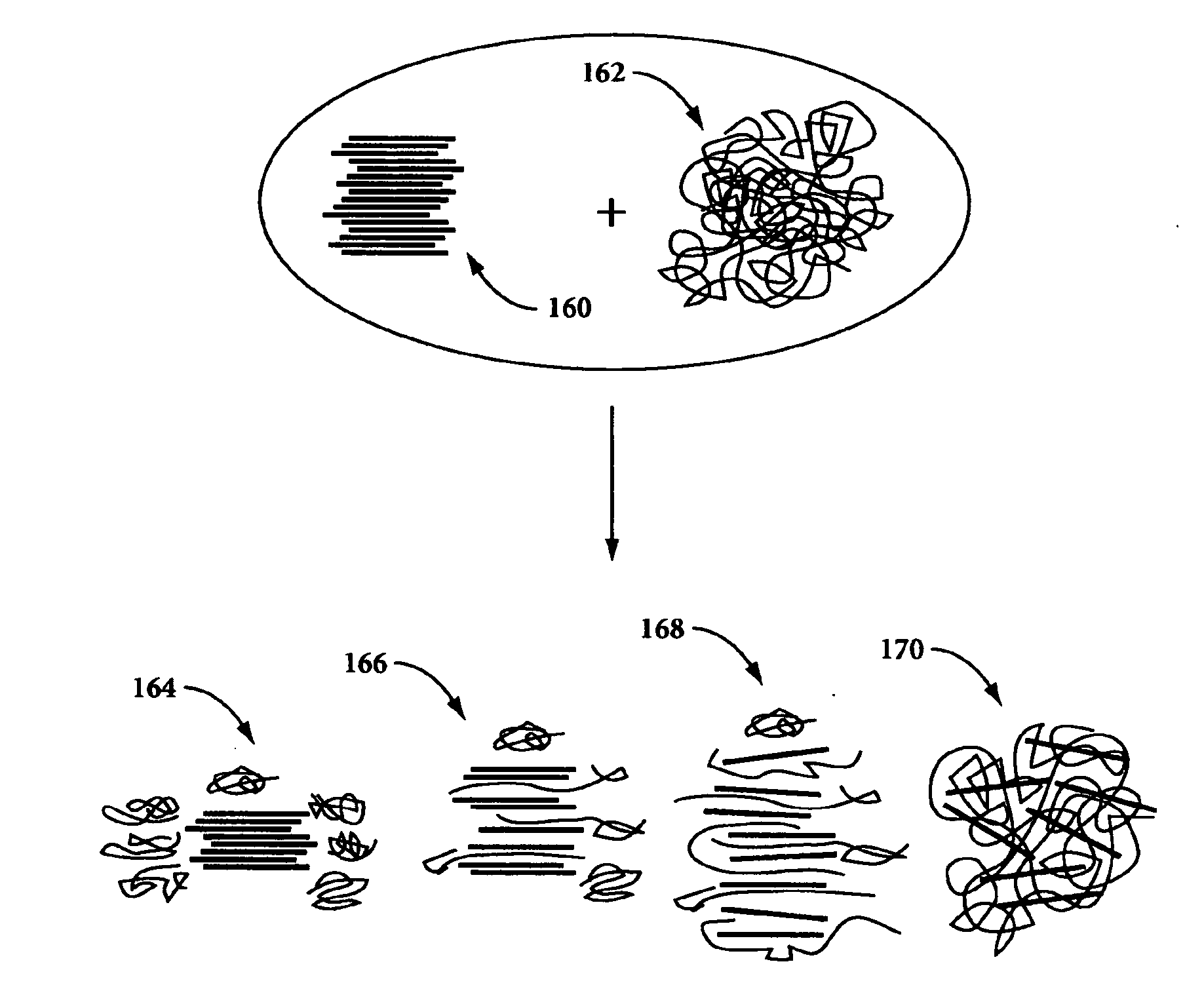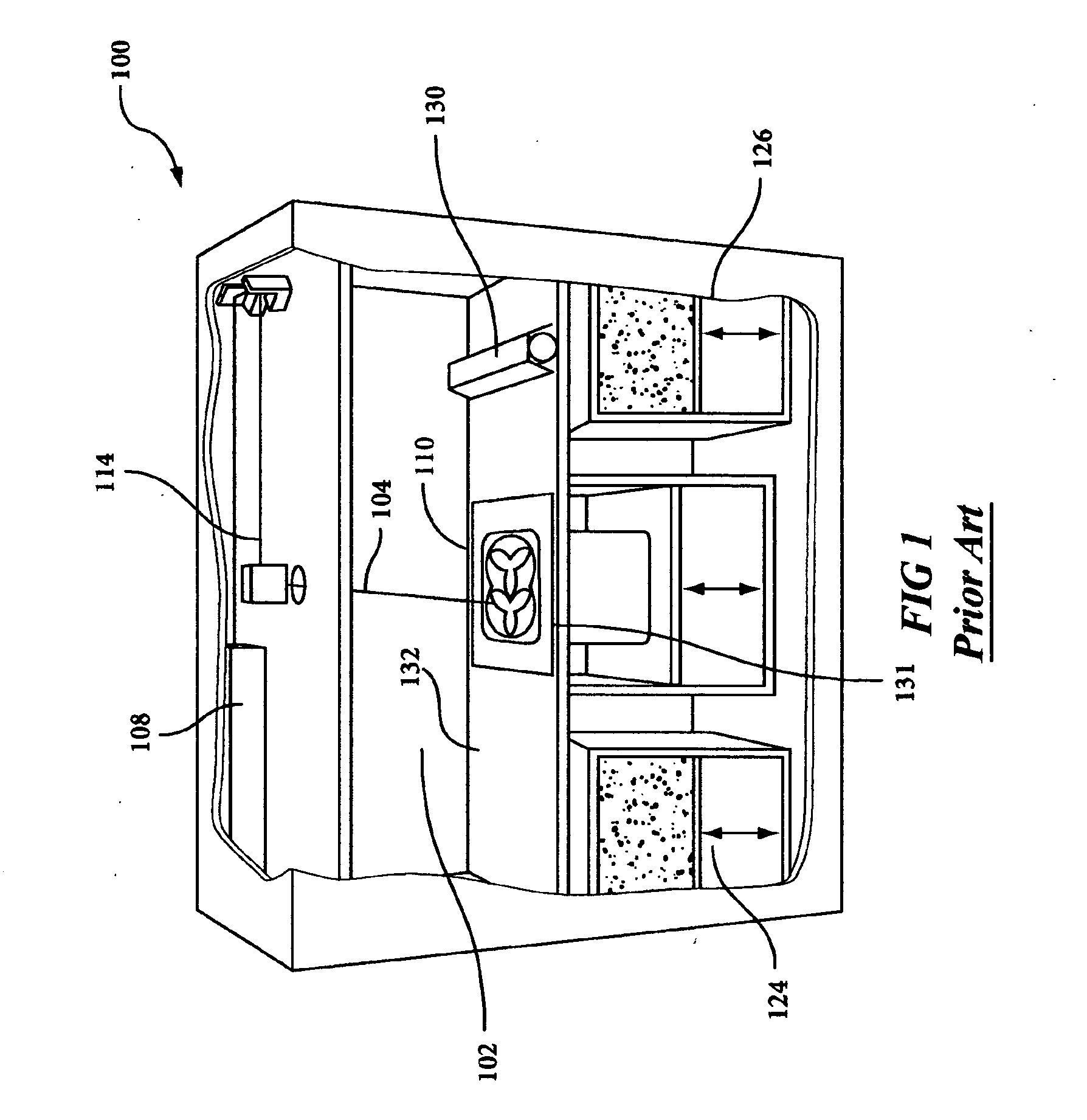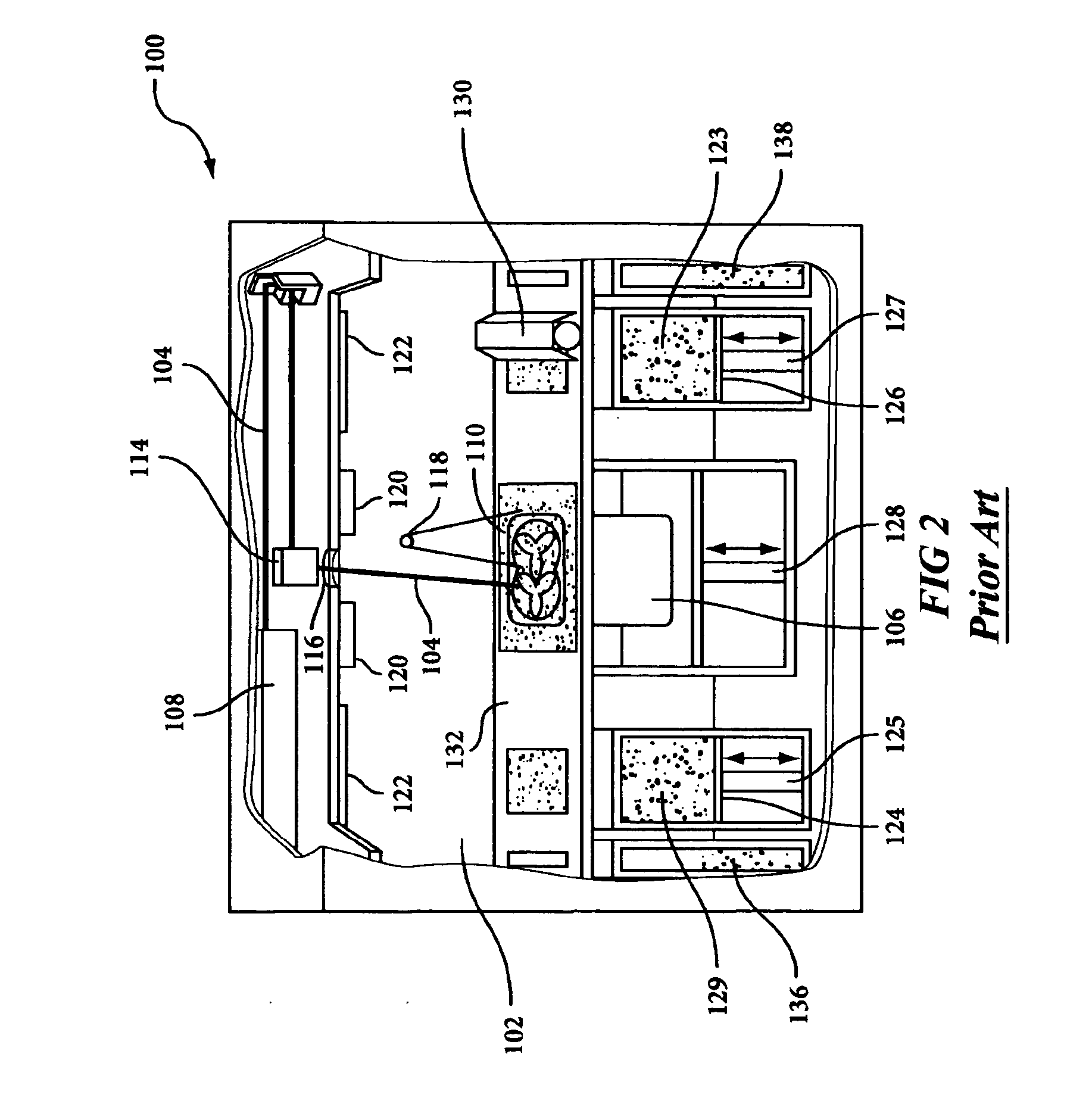Fire retardant polymer nanocomposites for laser sintering
a technology of laser sintering and nano-composites, applied in the direction of additive manufacturing processes, applications, electric/magnetic/electromagnetic heating, etc., can solve the problems of reducing toughness, melting flow, releasing smoke and toxic emissions, etc., and achieve the effect of improving flame retardan
- Summary
- Abstract
- Description
- Claims
- Application Information
AI Technical Summary
Benefits of technology
Problems solved by technology
Method used
Image
Examples
Embodiment Construction
[0018]FIG. 1 illustrates, by way of background, a rendering of a conventional selective laser sintering system. FIG. 1 is a rendering shown without doors for clarity. A carbon dioxide laser 108 and its associated scanning system 114 is shown mounted in a unit above a process chamber 102 that includes a powder bed 132, two feed powder cartridges 124, 126, and a leveling roller 130. The process chamber maintains the appropriate temperature and atmospheric composition (typically an inert atmosphere such as nitrogen) for the fabrication of the article.
[0019] Operation of this conventional selective laser sintering system is shown in FIG. 2 in a front view of the process, shown generally as the numeral 100, with no doors shown for clarity. A laser beam 104 is generated by laser 108, and aimed at target area 110 by way of scanning system 114, generally including galvanometer-driven mirrors that deflect the laser beam. The laser and galvanometer systems are isolated from the hot chamber 1...
PUM
| Property | Measurement | Unit |
|---|---|---|
| Flame retardant | aaaaa | aaaaa |
| Spreading enthalpy | aaaaa | aaaaa |
Abstract
Description
Claims
Application Information
 Login to View More
Login to View More - R&D
- Intellectual Property
- Life Sciences
- Materials
- Tech Scout
- Unparalleled Data Quality
- Higher Quality Content
- 60% Fewer Hallucinations
Browse by: Latest US Patents, China's latest patents, Technical Efficacy Thesaurus, Application Domain, Technology Topic, Popular Technical Reports.
© 2025 PatSnap. All rights reserved.Legal|Privacy policy|Modern Slavery Act Transparency Statement|Sitemap|About US| Contact US: help@patsnap.com



